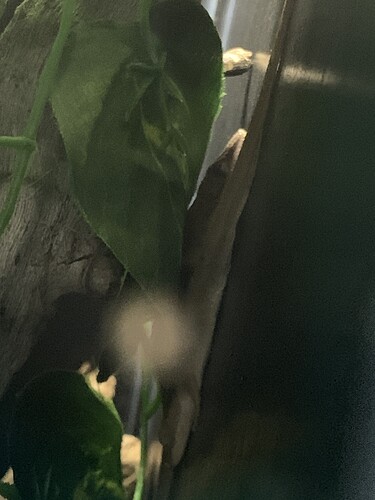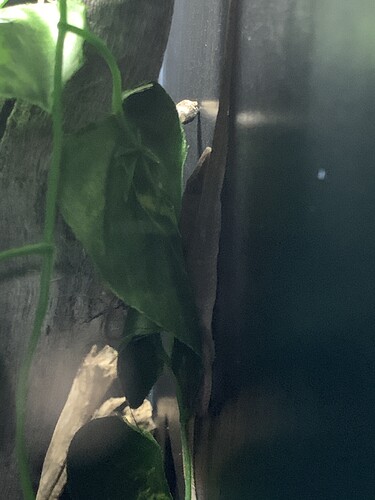From what I know, lizards don’t have very complex social interactions. At most, like with green anoles, they will live in groups but only interact when mating and otherwise leave each other alone.
I recently got a girlfriend for my male green anole, who I’d had for a few months. Prior to getting her, he had started to turn brown and yellow more often than he used to. After introducing them though, he has been green more often again. Nothing about the enclosure has changed except for the addition of his girlfriend. The past couple days, they have also been sleeping together. Not mating, but sleeping against each other on the side of the enclosure, tail to nose. I have seen their mating behavior and this does not match up. There are plenty of other spots for them to sleep that are the same temperature, humidity, and with the same cover, and they used to sleep far from each other when I first introduced them. Temperature and humidity are proper everywhere in the enclosure, and temperature on either of them is the same, so they wouldn’t be transferring heat. I’m not very sure why they would do this. Any thoughts?
5 Likes
Depends on the lizard imo. Some don’t care at all, like Leachies, only together for mating, female will even kill the male if she wants him out…
But Monitors for example Love interactions and when we got our female Ackie a male Ackie it was amazing seeing the difference in her 
Iguanas also, males can be very protective of their ladies too. Mourning geckos chirp and talk to eachother. Anoles also, many keep in groups. Your 2 are happy and getting along, he’s a happy boy 
1 Like
Many animals are far more social than we believe. Many/most do well on their own but will happily accept company. Sometimes with a surprising change in behaviour. A couple animals come to mind. Rattlesnakes for one. When kept together they are calmer. Like a drastic reduction in stress behavior. Two.Goldfish, I know not a herp but scaled, are known to suffer depression and anxiety when kept alone.
Three. Bearded dragons. Many people keep them but how many have watched the introduction of a couple year old lizard to a new lizard for the first time? Lots of waving and head shaking and push ups but after a week or two the original lonely lizard has changed, demeanor, colors, activity. In the wild they live in loose social groups.
Maybe your boy was lonely. Only long term careful observation will help us understand how animals interact with others of the same species.
One thing to look/watch for is communication. Talking isn’t the only form. Color and pattern changes, body posture. Body movement. As mammals we don’t instinctively understand reptiles so we need to discover and study. Even though anoles have been with us forever, I am sure if you spend enough time watching you will see behavior that will surprise you. And that other people have never seen or heard of. When you discover something like that, let us know.
Good luck with your anoles. They were my first non native(to my area) reptile as a kid and I would still keep them if I could find them healthy and in numbers here.

